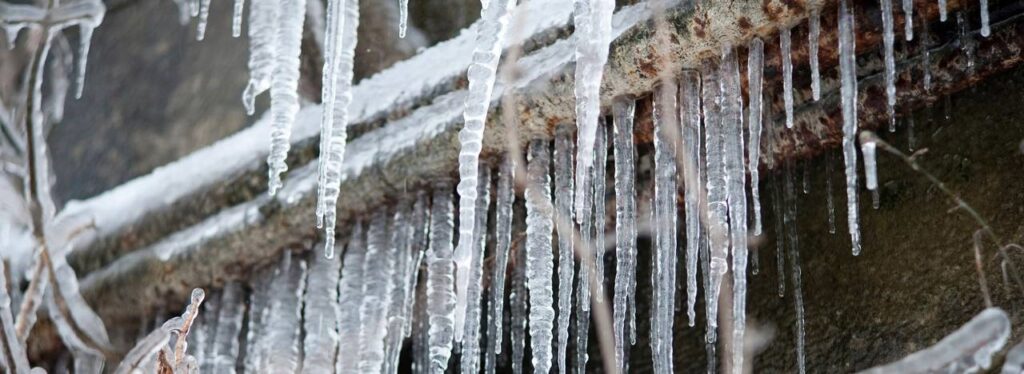Tips to Safeguard Your Pipes from Cold Weather: Specialist Advice
Tips to Safeguard Your Pipes from Cold Weather: Specialist Advice
Blog Article
Have you been interested in selective information concerning Winter Plumbing Precautions: Preventing Frozen Pipes?

Cold weather can damage your plumbing, specifically by freezing pipes. Right here's just how to avoid it from taking place and what to do if it does.
Introduction
As temperatures decrease, the danger of icy pipelines rises, potentially causing costly fixings and water damage. Comprehending just how to prevent icy pipelines is essential for home owners in cold climates.
Prevention Tips
Insulating susceptible pipes
Wrap pipes in insulation sleeves or make use of heat tape to secure them from freezing temperature levels. Concentrate on pipelines in unheated or external areas of the home.
Heating strategies
Maintain indoor spaces sufficiently warmed, particularly locations with plumbing. Open closet doors to enable cozy air to distribute around pipelines under sinks.
Just how to recognize frozen pipelines
Look for decreased water flow from faucets, uncommon smells or sounds from pipes, and noticeable frost on revealed pipelines.
Long-Term Solutions
Architectural changes
Take into consideration rerouting pipelines far from outside walls or unheated locations. Include added insulation to attics, cellars, and crawl spaces.
Upgrading insulation
Purchase premium insulation for pipes, attic rooms, and walls. Correct insulation aids maintain consistent temperature levels and decreases the risk of icy pipelines.
Protecting Outside Pipes
Yard hose pipes and outside faucets
Detach and drain pipes garden tubes prior to winter months. Set up frost-proof spigots or cover outdoor taps with protected caps.
Understanding Frozen Pipelines
What triggers pipes to ice up?
Pipelines ice up when exposed to temperatures below 32 ° F (0 ° C) for prolonged durations. As water inside the pipes ices up, it increases, taxing the pipe wall surfaces and potentially causing them to break.
Risks and problems
Icy pipelines can bring about water interruptions, building damage, and expensive repair work. Ruptured pipes can flooding homes and create considerable architectural damage.
Signs of Frozen Pipes
Determining icy pipelines early can stop them from rupturing.
What to Do If Your Pipes Freeze
Immediate activities to take
If you believe frozen pipes, maintain faucets open up to soothe stress as the ice melts. Make use of a hairdryer or towels taken in warm water to thaw pipelines gradually.
Final thought
Avoiding frozen pipelines calls for positive measures and quick responses. By comprehending the causes, indicators, and safety nets, homeowners can protect their plumbing during winter.
6 Proven Ways to Prevent Frozen Pipes and Protect Your Home
Disconnect and Drain Garden Hoses
Before winter arrives, start by disconnecting your garden hoses and draining any remaining water. Close the shut-off valves that supply outdoor hose bibs and leave the outdoor faucet open to allow any residual water to drain. For extra protection, consider using faucet covers throughout the colder months. It’s also important to drain water from any sprinkler supply lines following the manufacturer’s directions.
Insulate Exposed Pipes
Insulating your pipes is an effective way to prevent freezing. Pipe insulation is readily available at home improvement stores and is relatively inexpensive. Pay close attention to pipes in unheated areas such as the attic, basement, crawl spaces, or garage. Apply foam insulation generously to create a buffer against the cold. You can also wrap your pipes in heat tape or thermostat-controlled heat cables for added warmth.
Seal Air Leaks
Inspect your home for any cracks or openings that could let in cold air. Seal any holes around the piping in interior or exterior walls, as well as the sill plates where your home rests on its foundation. Additionally, make sure to keep your garage door closed unless you’re entering or exiting. Leaving it open creates a significant air leak that can lead to frozen pipes.
Allow Warm Air Circulation
During cold snaps, it’s essential to allow warm air to circulate evenly throughout your home. Leave interior doors ajar to promote better airflow. Open kitchen and bathroom cabinets to help distribute heat consistently around the rooms. If you have small children or pets, be sure to remove any household chemicals or potentially harmful cleaners from open cabinets for safety.
Let Faucets Drip
A small trickle of water can make a big difference in preventing ice formation inside your pipes. When temperatures drop significantly, start a drip of water from all faucets served by exposed pipes. This continuous flow helps prevent the water from freezing. Additionally, running a few faucets slightly can relieve pressure inside the pipes, reducing the chances of a rupture if the water inside does freeze.
https://choateshvac.com/6-proven-ways-to-prevent-frozen-pipes-and-protect-your-home/

I stumbled upon that blog posting on Preventing and dealing with frozen pipes while doing a search on the internet. You should take the opportunity to distribute this article if you liked it. I praise you for being here. Come back soon.
Book Now Report this page